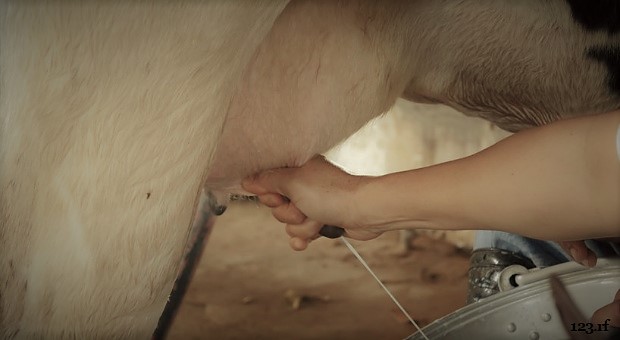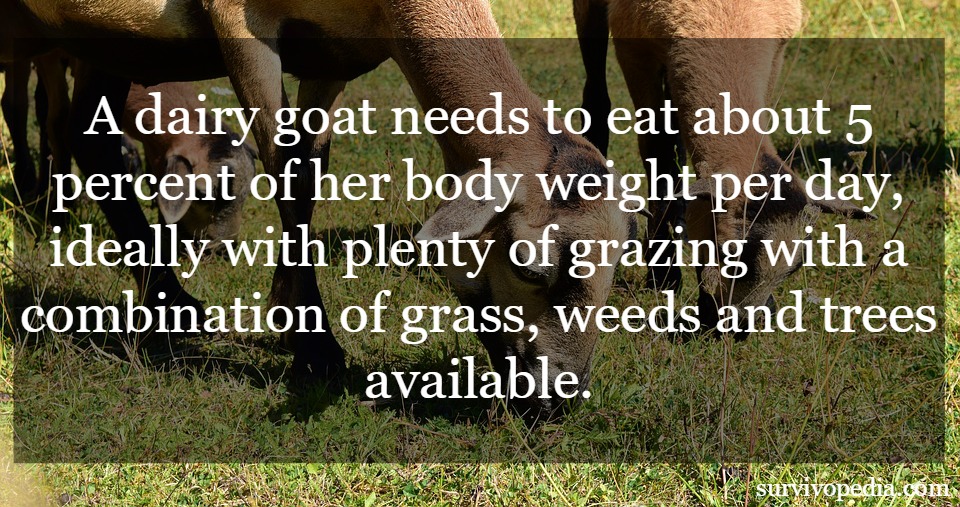If you have cows or goats for milk, you’ve most likely ran into times when milk production goes down.
There’s always a reason for this, but it doesn’t always mean that something’s wrong, and you can’t do anything about it. Many times you can, though. We’re going to talk about how to increase milk production when things slow down.
How Much Milk to Expect
Many new farmers read lots of articles about their milk cows and have preconceived notions about how much milk they should be getting, then think something is wrong when they get less. Rule number one: know your cows. There are many factors that affect how much milk your cow makes: age, temperature, environment, diet, and cycles: there’s no exact answer.
Understand, too, that your cow or goat isn’t going to give milk every day all year round. You need to give her a couple of months off. Actually, she’ll TAKE a couple of months off no matter what, so expect it. Assuming she’s bred back, she’ll stop lactating during the last couple months of her pregnancy in order to give her udder time to heal and get ready for the calf or kid.
Also, for about 4-5 days after she calves or kids, there will be colostrum in the milk, so you need to let the baby have that. You don’t want to drink it. After that time period, though, it’s fine to resume the milking schedule.
Tips to Count on for Increasing Milk Production
Remember that milk production will ebb and flow even for the same cow, so her production won’t be the same over the course of her lactation period. What you need to watch for is a sudden decrease. Here are steps that you can take to make sure that you’re providing optimum conditions for top milk production.
Water
This is one of the top factors that can affect milk production in your animals. First and foremost, you need to make sure that your animals have plenty of water. A milk cow will drink 30-50 gallons of water a day, and if it’s really hot (or cold) that may increase. It can actually double. A dairy goat needs 2-3 gallons per day.
If she doesn’t have enough water, she won’t produce as much milk. The best way to make sure she’s drinking enough is to provide ready access to a constant supply of clean water.
Diet
What your milk animals eat is important. A lactating cow will eat a hundred pounds of food per day, once everything is included. Even if they’re getting a ton of roughage, they need to eat both forage and concentrate. For cows, the percentages of forage vs concentrate varies depending upon where she is in her lactation cycle, but she should be eating about 3.5 percent of her body weight in food daily between forage and concentrate.
Dry forage is grass, quality alfalfa or alfalfa-grass mix hay, or straw. Wet forage, or silage, is fermented forage and consists of corn, barley or alfalfa. You can feed either or both, as long as they’re getting enough. Concentrate is cereal-based grain/pellets that provides the energy, fat, minerals, and protein that they need.
Finally, minerals are critical to milk production. For goats, the primary minerals that they need are calcium, sodium, and phosphorus. Cows need a wider variety. The easiest way to make sure that your cow is getting enough minerals is to feed quality concentrate and provide a mineral block that they have easy access to.
On the flip side of this, if your cows are overweight, that can reduce milk production, too. Know your cows, know what they’re supposed to look like, and make sure that they’re getting enough but not too much.
Lack of Space
Cows need to have plenty of space to roam and lie down. Standing in an over-crowded, free-stall operation can limit production because, among other things, standing for too long causes fatigue stress. Same thing with goats. They need plenty of room to wander.
Stress
If the cows or does are stressed, be it from heat, a disruptive environment, or illness, their milk production may decrease. To combat heat, provide barns or at least a lean-to if you don’t have plenty of trees so that they have shade. Enough water will help, too.
If the stress is environmental – too much noise, dogs, predators, etc. do what you need to do in order to provide a calm environment in which they feel safe and can get enough rest.
Also, if you’re stressing her during milking, she may not let her milk down.
Health Problems
If your milk animal gets sick, her output will decline. Take care of her teats so that she doesn’t get mastitis, keep her on an effective parasite program, and make sure that the pasture is free of toxic weeds. Also, make sure that her hooves are in good condition and that she’s just healthy in general. A health cow or doe produces optimal milk.
Improper Milking Techniques
You need to know how to properly milk your cow or goat so that you’re getting all of the milk out in a manner that’s not stressing her.
For instance, we have one cow that we can literally milk in the field if somebody holds her halter. Another needs to be in the milking stall with the head gate locked, but she’ll stand there patiently even if she runs out of feed to occupy her. And our problem child is a young cow. It’s her first year and if you don’t get in and get out in five minutes or so, you’re done, even with the kick stop on.
Now, you need to milk her dry, or as my dad says, strip her. If you leave more than a pint of milk in each quarter, for a cow, then you’re asking for problems. Both cows and does need to be milked completely in order to optimize production.
In summary, your goal is quiet efficiency. Start milking within a minute or two of getting her into the stall, get her milked in 5 or 6 minutes, then let her out before she has a chance to get fussy.
Video first seen on The Flip Flop Barnyard.
Psychological Trauma
Yes, you read that right. If one of your ladies has had a negative experience sufficient enough to traumatize her, she may have a problem letting down her milk, which means you won’t be able to milk her sufficiently. There’s not much you can do other than provide a calm atmosphere now and don’t make matters worse by being mean to her for misbehaving.
Don’t do anything in that stall other than milk – it’s not the place where she comes for shots or veterinary appointments because you don’t want her to associate it with anything painful or scary.
It’s not that hard – make sure that your dairy animal is healthy, well fed and watered, has plenty of space to move, and is relaxed. And make sure that you milk her properly. A decline in production is going to occur a couple of months after giving birth, and again as her dry cycle nears, but a rapid decline in production is cause for concern.
In short, if you want to increase milk production, take care of your animals. Follow these tips and take one step toward family independence!
If you have anything to add, please feel free to do so in the comments section below. There’s always more to be said on topics like this!
This article has been written by Theresa Crouse for Survivopedia.










